Itaewon
Itaewon has long been the favorite hangout district among English teachers in Korea, US Armed Forces in the country as well as countless expats. Known for its nightlife and shopping, Adventure Teaching takes you on a deeper dive about this remarkable neighborhood that has become much more to its international visitors than just a place to find comfort food from back home.
The birthplace of Korea’s first multicultural society
Itaewon is considered to be one of Seoul’s iconic multicultural streets along with Seorae Village in Seocho-gu. Seorae Village is home to many French residents. Because it is adjacent to the former US 8th Army Headquarters (aka Yongsan Garrison), it has evolved into an entertainment district for US forces in Korea and has become a tourist destination visited by many foreigners.
If you go up the hill from the Itaewon Fire Station, you can find the Seoul Central Mosque, an Islamic mosque, and you can see Muslims worshiping. Many Muslims in Korea come from Arab countries or Islamic countries such as Turkey, Pakistan, Bangladesh, Indonesia, and Central Asia.
It is said that this mosque was first proposed by the South Korean government to strengthen diplomacy with Middle Eastern countries. It was built in the 1970s with donations from all Islamic countries.
A Jewish Synagogue was built in 2008. It offers Sabbath service every Saturday at 10 o’clock.
Itaewon Overview
As an iconic downtown area of Yongsan-gu, Itaewon has become famous as a gathering place for foreigners, foreign goods, and foreign cultures. Administrative wards, known as ‘dongs’, are organized as Itaewon 1-dong and Itaewon 2-dong.
It borders Yongsan-dong 2-ga and Yongsan-dong 4-ga to the west, Dongbinggo-dong and Bogwang-dong to the south, Hannam-dong to the east (another great international scene), and Jangchung-dong 2-ga to the north across Namsan.
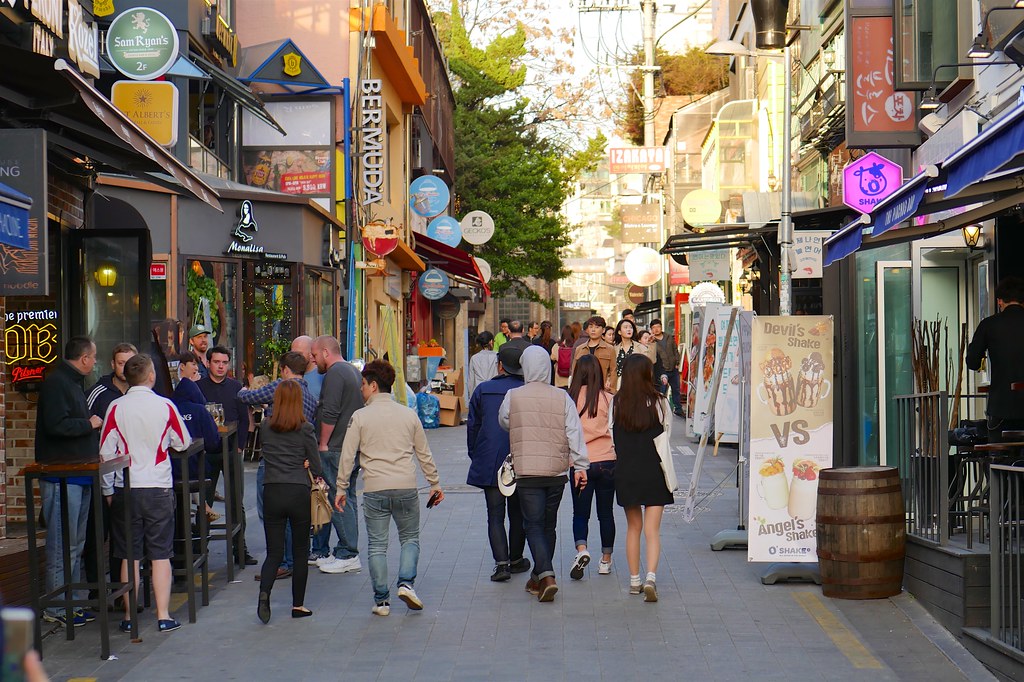
Travis Estell on Flickr (Creative Commons)
Itaewon History
From the beginning of the Goryeo Dynasty to its end, the area of Itaewon-dong was an administrative district different from the western part of Yongsan-gu, and it shared some of its history with Seongdong-gu.
Stations were usually setup in Korea at key transportation points, and as a large floating population would naturally come and go, villages began to form around
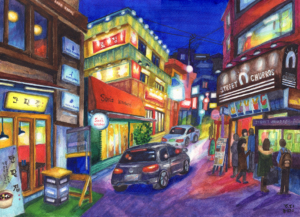
Jinho Jung on Flickr (Creative Commons)
these stations, and it became customary to name surrounding villages accordingly. According to archives, in addition to Itaewon (梨泰院), there were other names such as Itaewon (李泰院) and Itaewon (異胎院) with different Chinese characters.
It has been said that Itaewon was the site of a Japanese residence called Itain (異他人). It is believed that the name of the village was derived from that.
Later, the Eighth US Army occupied the site of the former Japanese military barracks in the area. As a result, Itaewon-dong and Hannam-dong near Yongsan Garrison became a vital entertainment and shopping district. The Itaewon market established by local businessmen prospered by continuing commerce with materials from the PX of the US military. As a number of embassies and embassy residences are located in Itaewon and Hannam-dong, starting in the 1970s, the northside and hills beyond the main road, Itaewon-ro, gradually began to take on the appearance of a wealthy village.
Administrative Wards of Itaewon
Itaewon 1-dong
It is an administrative dong that has jurisdiction over the southern part of Itaewon-dong, and consists of residential and commercial districts centered around Itaewon Station. Yongsan-gu Office and Hamilton Hotel are also located here.
Itaewon 2-dong
It is an administrative dong that has jurisdiction over the northern part of Itaewon-dong. Popular Gyeongridan-gil road is located down from the hills leading to Namsan Mountain.
Geography
There are several vacant lots to the east of Yongsan Garrison. Formerly US base facilities. Now, as they have moved to Camp Humphreys in Pyeongtaek, the city of Seoul is setting up a master plan step by step by placing it as a special conservation area.
Roads and Traffic Landmarks of Itaewon
Seoul Subway Line 6 runs along the main road, Itaewon-ro, with main stations in the area being Noksapyeong Station and Itaewon Station. Global cuisine and nightlife venues have formed around Exits 1 and 2 of Itaewon Station. If you go down the road between Exits 3 and 4, you will find Antique Furniture Street. From Noksapyeong Station’s Exit 2, follow along the former US military base towards Namsan and veer off to Haebangchon and Gyeongridan-gil on the other side for more great hangouts. Hangangjin Station is not as close as Noksapyeong Station from the main action around Itaewon Station, but close enough to walk to. Near Hangangjin Station, Seoul Yongsan International School, Blue Square, and imported car exhibition and sales centers are located. Coming out of Exit 1 or 3, go straight and you will eventually come to the Itaewon main intersection.
Seoul Subway Line 9 will eventually extend to the area and provide a new subway route connecting Gangnam to the Yongsan area. Stations will be at the existing Dongbingo Station. This will make a subway line quite close from Itaewon 1-dong side by the southeast end of the former Yongsan Garrison. The new line extension will then have another stop at National Museum of Korea before connecting to Yongsan Station. The extension will finish by 2027.
Buses
Buses #110, #400, #405, #421, and Seoul City Tour Bus come through the area.
Tourism / commercial areas
There are various restaurants specializing in international cuisine, but among them, Muslim restaurants are especially strong. Near the Islamic Mosque, there are quite a few restaurants serving Middle Eastern or Arab food. In particular, there are many small bakeries and grocery stores that sell halal food run by Muslims.
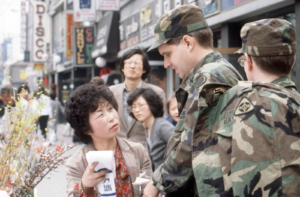
NARA & DVIDS Public Domain Archive (Creative Commons)
Itaewon attracts foodies from all over as it offers food from various cultures. There are many Itaewon restaurants and street vendors run by people from all over the world such as Egypt, Jordan, Uzbekistan, Vietnam, Thailand, the Philippines, Central and South America, etc.
Itaewon was also the birthplace of the craft beer craze in the Korean beer market.
In addition, at the Itaewon Global Village Festival held every October, restaurant owners go all out on Itaewon-daero. So it’s good to plan a visit to the area on this day.
Although not your typical form of tourism, the adjacency of Yongsan Garrison induced the formation of more nightlife. And with that, ‘Yankee Bars’ began to pop up in the late 1950s. This eventually grew into a cluster to become known as ‘Hooker Hill’. However, the Yongsan Garrison began to migrate down south to the Pyeongtaek area from 2012. Then, the base-reliant economy in Itaewon died down and a commercial multicultural economy emerged. The alley that became known as ‘Hooker Hill’ has since been going through a renaissance. Particularly as Itaewon has been seeing real estate investors buying up and breathing new life in the wider area. In the same back streets, ‘Homo Hill’ has taken root. Known for its gay scene, the alley gained a lot of notoriety for its Covid breakout in past years.
Major Institutions/Facilities
As it is the most well-established multicultural society in Korea, embassies of many countries are located here. Around Gyeongridan-gil, there are many embassies and residences of the Middle East and Southeast Asia. Also, there is also a foreign school nearby.
Hamilton Hotel is also famous as a landmark in Itaewon. There are many famous restaurants around here. In addition, the hotel’s outdoor swimming pool is one of the city’s most popular summer hangouts.
- Teaching English in Nowon-gu of Seoul - August 23, 2022
- Teaching English in Cheongju at Chungbuk International Education Center - August 22, 2022
- Teaching English in Gyeongbuk Province English Camps - August 18, 2022

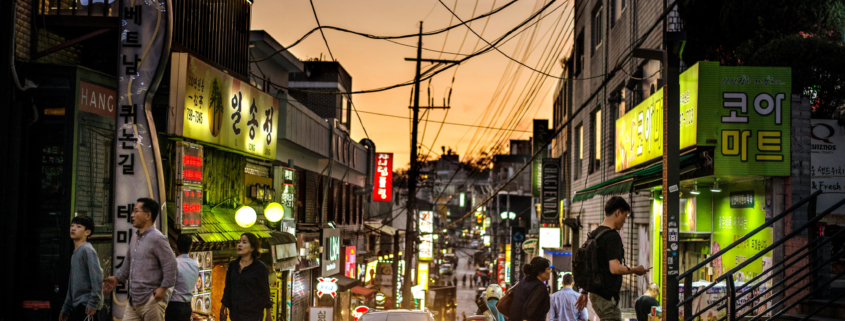
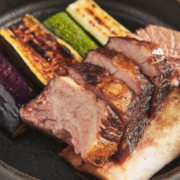
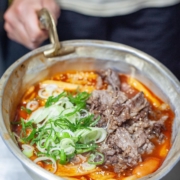
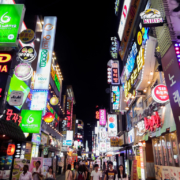



Leave a Reply
Want to join the discussion?Feel free to contribute!